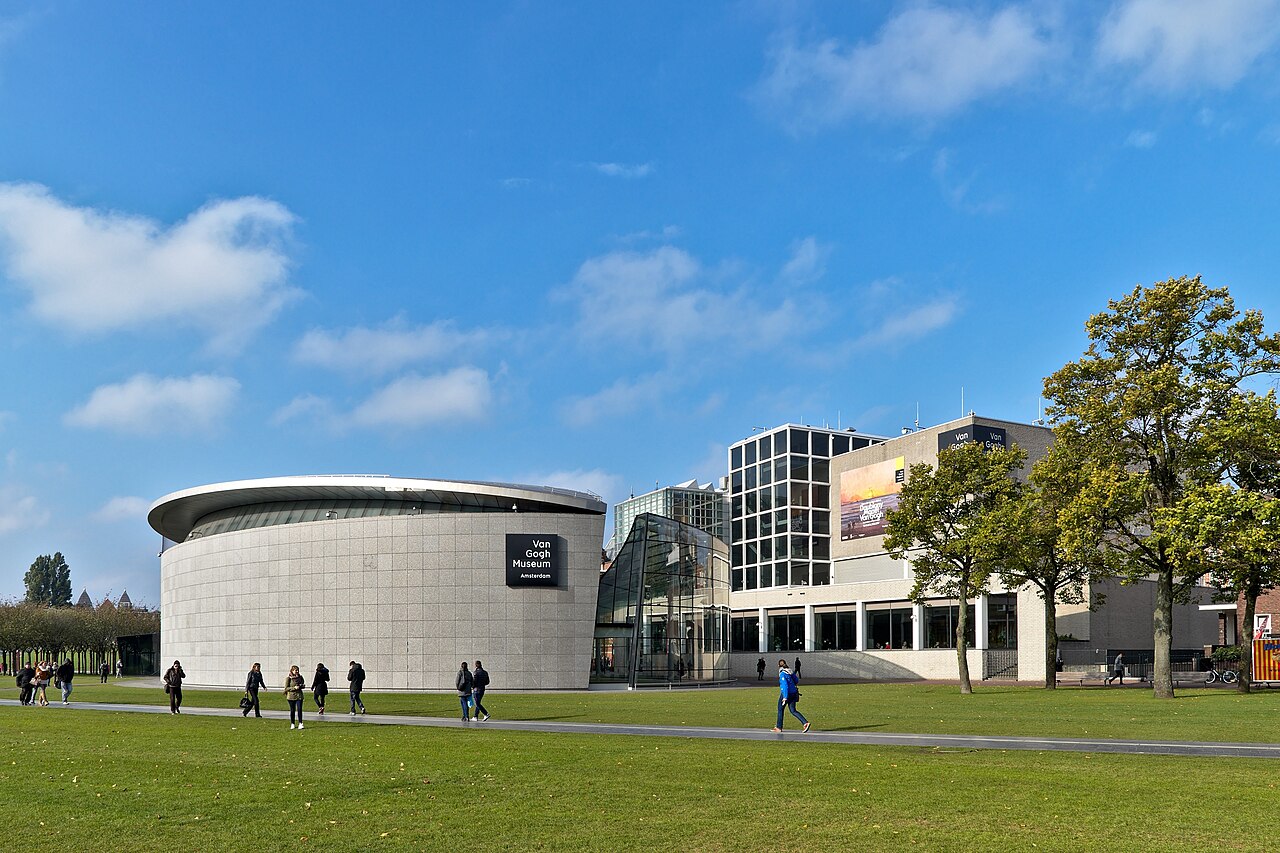The Van Gogh Museum in Amsterdam stands as a testament to the life, art, and enduring legacy of one of the most influential and celebrated painters in the history of Western art, Vincent van Gogh. Located on the Museumplein, the museum is a vibrant and immersive tribute to the iconic post-impressionist artist, housing the world’s largest collection of his works.

Opened to the public in 1973, the Van Gogh Museum was established with the mission of preserving and showcasing the extensive collection of Vincent van Gogh’s paintings, drawings, and letters. The museum was designed to provide a comprehensive and chronological overview of the artist’s life and creative evolution, offering visitors a profound understanding of the man behind the masterpieces.

The museum’s collection is a treasure trove of over 200 paintings, 500 drawings, and 750 letters written by Vincent van Gogh. The works span the entirety of his brief but prolific career, providing a captivating journey through the various phases of his artistic development. From his early works influenced by Dutch and French realism to the vibrant colors and bold brushstrokes of his later masterpieces, the collection showcases the depth and diversity of van Gogh’s artistic expression.
One of the highlights of the museum is the famous painting “Sunflowers.” This series of still-life compositions featuring sunflowers is a quintessential example of van Gogh’s use of color and texture to convey emotion and capture the essence of the subject. The Van Gogh Museum holds several versions of “Sunflowers,” allowing visitors to witness the evolution of this iconic series and appreciate the artist’s exploration of color and form.
Another masterpiece that commands attention in the museum’s collection is “The Bedroom.” Van Gogh’s fascination with capturing the essence of domestic life is evident in this painting, where he used bold colors and distinctive brushwork to convey a sense of intimacy and personal connection to his surroundings. The painting serves as a testament to van Gogh’s ability to infuse everyday scenes with emotional intensity.
The museum also houses “The Potato Eaters,” an early masterpiece that reflects van Gogh’s commitment to depicting the hardships of rural life. The dark palette and somber atmosphere of the painting reveal the artist’s social conscience and his desire to connect with the lives of ordinary people.
Apart from the paintings, the Van Gogh Museum offers a unique insight into the artist’s creative process through a vast collection of his drawings and letters. The letters, many of which were written to van Gogh’s brother Theo, provide a poignant narrative of the artist’s life, struggles, and creative aspirations. These personal correspondences offer a glimpse into the mind of a tormented genius, revealing the inner workings of his thoughts and the profound connection between his life and art.
The architecture of the museum itself is a work of art, designed by Dutch architect Gerrit Rietveld. The modern and minimalist structure was created to complement the overall aesthetic experience of the museum and create a harmonious space for the display of van Gogh’s masterpieces. The layout of the museum allows for a chronological exploration of the artist’s life, creating a narrative that unfolds as visitors move through the exhibition spaces.
Beyond its permanent collection, the Van Gogh Museum hosts temporary exhibitions that explore various aspects of the artist’s life, influences, and impact on the art world. These exhibitions often feature collaborations with other institutions and provide fresh perspectives on van Gogh’s legacy.
The Van Gogh Museum has become a cultural pilgrimage site for art enthusiasts, scholars, and tourists from around the world. Its commitment to education and public engagement is evident through a range of programs, guided tours, and interactive exhibits designed to make van Gogh’s art accessible to all audiences.
In conclusion, the Van Gogh Museum in Amsterdam stands as a remarkable tribute to the genius of Vincent van Gogh. Through its extensive collection of paintings, drawings, and letters, the museum offers a profound and immersive experience that allows visitors to connect with the artist on a personal and artistic level. As a cultural institution, the Van Gogh Museum continues to inspire and educate, ensuring that the legacy of this extraordinary artist endures for generations to come.

